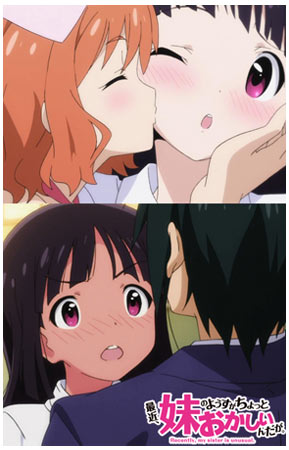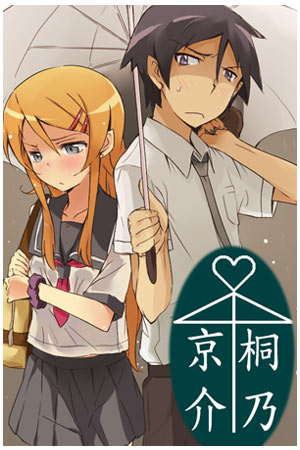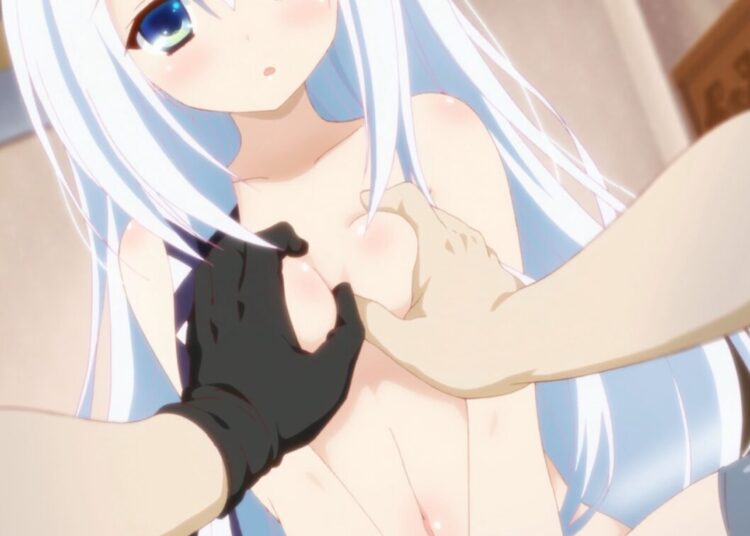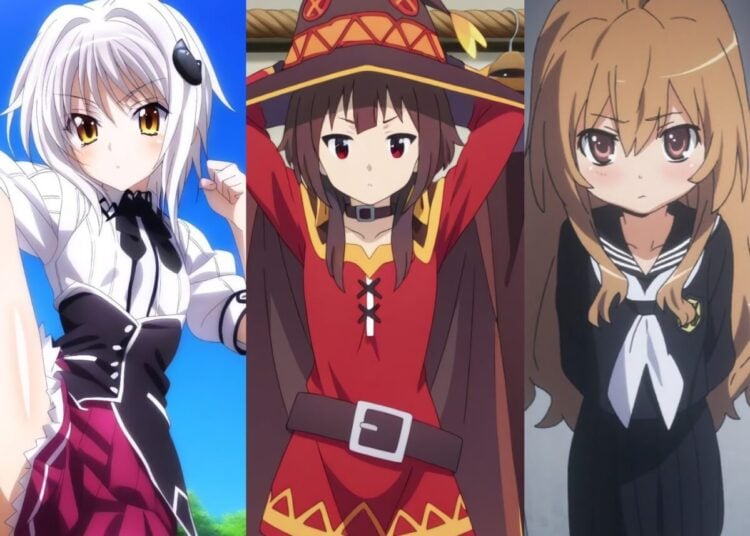It’s fun to examine some of broader categories of anime that exist. There are harem anime like Infinite Stratos and Maken-Ki!, mecha-based shows like Evangelion or Gundam, slice-of-life comedy series based on 4-koma (four-panel) manga like Kin’iro Mosaic, which are referred to as “Nichijou-kei” by fans in Japan, plus the popular trend in music/idol related anime like K-On!, IdolMaster, Love Live! and Wake Up Girls! Another category that’s gotten really popular lately is 妹系 imouto-kei series which center around a male main character’s younger sister (either actual sister or unrelated by blood), which usually includes some gimmick, like the sister is into otaku culture and eroge, etc. The latest entry into this category is 最近、妹のようすがちょっとおかしいんだが Saikin, Imouto no Yousu ga Chotto Okashiinda ga (“Recently, My Sister is Unusual”), or ImoCho for short. It’s the story of a boy named Yuya who gets a new stepsister named Mitsuki when his father gets remarried. When his new sister is possessed by a yuri-loving ghost named Hiyori who’s got a bit of a “brother complex” as well as a supernatural chastity belt, much sexy comedy ensues. Like Kiss x Sis, ImoCho isn’t exactly subtle, but you’re looking for a new “guilty pleasure” anime to watch, you might enjoy it.

The latest imouto anime is ImoCho. Are you watching?
When you start tozwatch anime, you’re likely to come into contact with some Japanese cultural concepts you’re not familiar with. Like the first time you encounter the system of senpai/kohai, seniors or juniors in a school or organization, which is quite different from the way we do things in the U.S. Or working out how the name suffixes like –san, –chan and –kun work. Or, what’s up with those “cousins with benefits” in Sailor Moon? Or in episode 1 of K-On!, why does Tsumugi add her french fries to a pile that Mio and Ritsu are eating from rather than just eating from her own tray? (It was to reinforce her new place as an official member of the light music club.) One image that confused me was 相合い傘 ai-ai-gasa, roughly translatable as “together under the umbrella of love.” The Japanese consider two people walking under an umbrella together to be very romantic, and children will sometimes draw an umbrella on the chalkboard with two people’s names written under it, the equivalent of “Hanako and Taro, sitting in a tree, K-I-S-S-I-N-G…” This visual image is completely alien to us, the first time we see it.
Actually, these little cultural points of confusion are often interesting to the Japanese, and I’ve come across blogs discussing concepts like ai-ai-gasa and what we foreigners think of them when we first encounter them. Though some Japanese net users can seem grumpy at Western fans for adopting “their” popular culture as our own, as a group Japanese are very flattered that people around the world know so much about their country. It’s not uncommon to find websites offering Japanese translations of 4chan threads or reviews of anime written by users on My Anime List, or translating especially bad English subtitles in fansubs back to Japanese for a good laugh.

It’s easy to encounter confusing Japan-related cultural elements in anime.















